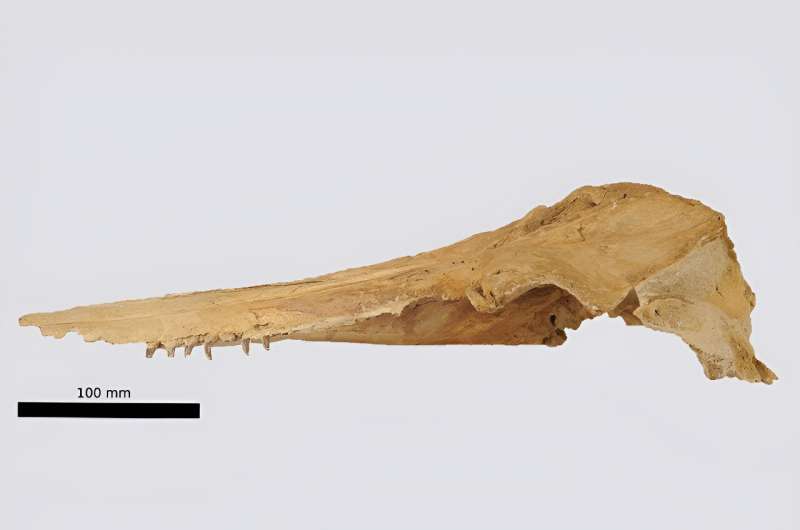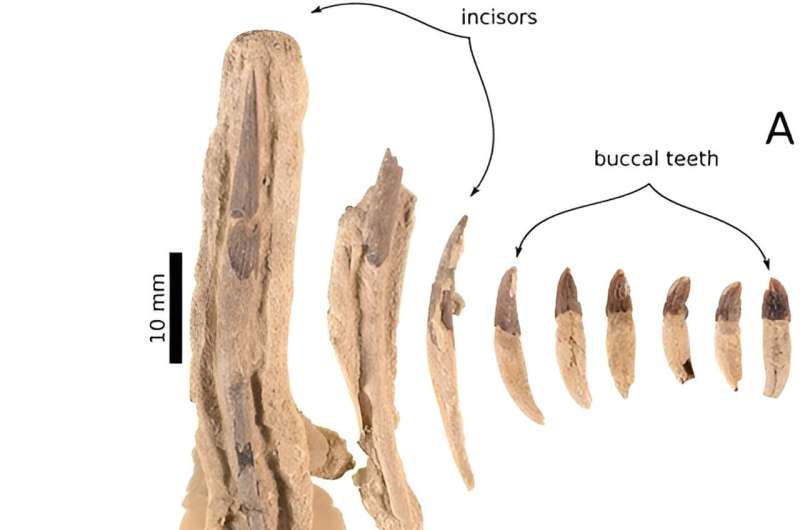This article has been reviewed according to Science X's editorial process and policies. Editors have highlighted the following attributes while ensuring the content's credibility:
fact-checked
trusted source
proofread
New fossil dolphin identified

University of Otago researchers have formally identified and named a fossil dolphin which they discovered has a unique feeding method.
A paper published in the Journal of the Royal Society of New Zealand names the fossil Aureia rerehua.
Lead researcher Shane Meekin, who completed a Master of Science in the Department of Geology, says the fossil was found many years ago, but was recently identified and named after it was studied by researchers.
Aureia was found in a quarry in the Hakataramea Valley and has been housed in Otago's Geology Museum, along with other prehistoric treasures thanks to the work of the late Emeritus Professor R. Ewan Fordyce, colleagues and alumni.
It had widely splayed teeth which are thought to have clasped around fish, like a wide basket, which is unusual because other ancient dolphins in the area usually used their teeth to strike prey, Mr. Meekin says.
"When looking at the teeth of dolphins, it's natural to think the large teeth at the front and center of the mouth would be the main tools for catching prey, stabbing or slashing unfortunate fish. This is how related dolphins did appear to hunt, but Aureia looks to have taken a totally different approach, using these teeth in a more delicate manner," he notes.

Aureia was small in size with a weak skull and flexible neck, making it capable of hunting in shallow waters.
Its name comes from the Māori word aurei, meaning cloak pins which resemble its teeth; and rerehua, meaning beautiful, "since it's an exquisitely preserved specimen."
Mr. Meekin says the discovery shows there were many fossil dolphins in one small area, which varied greatly in form.
"This shows that seemingly similar animals can coexist if they explore different ecological niches," he says. "It also further indicates that early prehistoric dolphins used many different feeding strategies to explore different niches, which is why so many different types of extinct dolphins have been retrieved from fossil localities such as Hakataramea valley."
Hakataramea is part of the Waitaki Whitestone geopark, New Zealand's first UNESCO geopark which was created due to the abundance of fossils in the area.
More information: Shane Meekin et al, Aureia rerehua, a new platanistoid dolphin from the Oligocene of New Zealand with a unique feeding method, Journal of the Royal Society of New Zealand (2024). DOI: 10.1080/03036758.2024.2314505
Provided by University of Otago




















